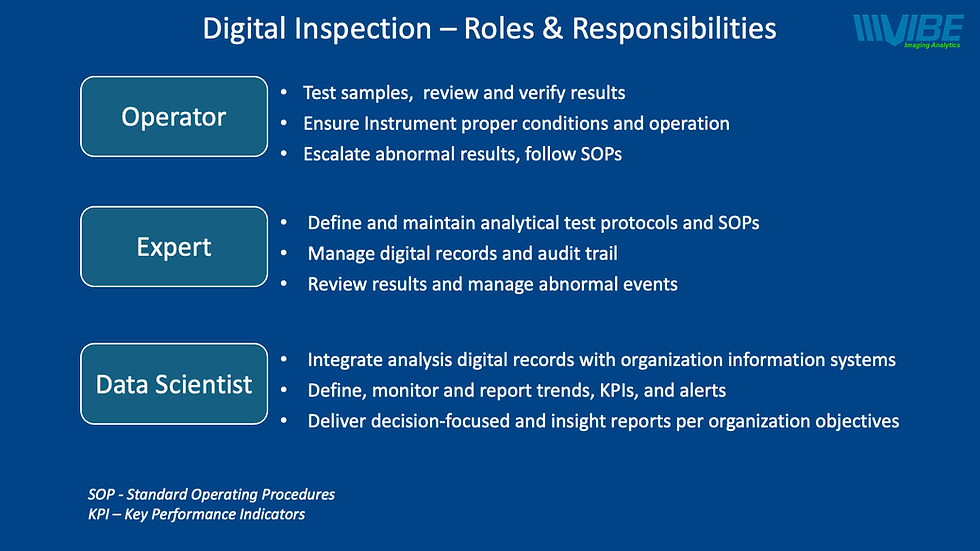Introduction to the Vibe IA Blog
- "The Grain Guru"
- Sep 23, 2018
- 3 min read
Updated: May 15, 2022
The Vibe Imaging Analytics Blog: What We Hope to Share With You
We have decided to start this blog as a way to communicate what our technologies at Vibe can do for the seed and grain industries and other participants of the staple food supply chain, update on our latest development and applications, and start and engage an on-going dialogue on the issues/changes faced by the industry and how we can to the best of our ability to contribute to solving those issues, in the process creating a community that care about the same things as we do to exchange ideas and hopefully make some real changes.
So let’s start with why. Why do we do what we do? At Vibe, everyone is committed to using technology to improve our food supply chain and system, and ensure food security for all. We have observed outdated industry standards and practices, lack of transparency as the industry norm, and huge food waste as a result of outdated practices and lack of actionable insights for agribusinesses. We can use technology to improve food quality & safety, reduce waste and increase profitability for agribusinesses in this competitive environment. Access to relevant information is power, without properly measuring and monitoring things it is so much harder to get better results. Our end goal is to strengthen and improve the efficiency of staple food system with technology.
We all know that with a growing population and increasingly limited natural resources, it is increasingly a challenge to feed everyone and do so well. One approach is to increase yield by better utilizing natural resources such as adopting precision agriculture and developing better stronger more resilient seeds; the other, which is getting more attention, is to reduce the 30-40% post-harvest food waste, which not only generates more food but also relieves (or at least not to puts more) pressure on mother nature. And Vibe intends to be part of the latter solution. We do so by providing solutions based on sensors and cloud-based analytical tools that can accurately and consistently inspect and measure grains in different environments with high speed, so agribusinesses always know exactly the conditions their grains are in, and take actions to control the situation the moment when problems occur.
In the past few years we have seen a boom in developing, financing and adopting advanced technologies in agriculture, which is real progress and the direction everyone in agtech would love to see. There have been a lot of discussions and enthusiasm around precision agriculture, IoTs, better imaging technologies to improve farming activities; however, in our view there is also a huge technological gap in terms of how quality inspection and commercial grading are conducted along the supply chain. Quality inspection practice in 2018 is still primarily manual and relying on visual inspection, involving highly specialize inspector counting kernels in a sample one by one, which is mind boggling especially compared to how advanced some parts of the agribusiness has become. We believe that this is an overlooked area in the food system that desperately calls for improving, considering how important grading is for the entire agriproduct trade. Every step along the supply chain, accurate, timely and consistent grading is the foundation of trading activities, which in the commodity world is critical, considering the volume of grains that need to be inspected and change hands to meet the demands of various industries whose operations are based on receiving proper quality and certain volume of grain products on a daily basis.
In 2016, there were 3 billion metric tons of the top five grains (rice, wheat, corn, soy, and other coarse grains such as oats) were produced and valued at ~US$700 billion. This is just the beginning. From then on these grains get separated, co-mingled many times throughout the supply chain until they become final product – food, beverage, oil, animal feeds, etc., for domestic consumption and exporting. Every time when they change hands, these grains need to be properly evaluated and their value increases. With that enormous volume the time and resources spent on inspection and grading multiply, and errors result in real economic loss – either by accepting the bad or throwing away the good. There is a library of literature focused on studying the error rates of human visual inspection practice, and the average error rate is about 20%. By automating that manual inspection process, which has been done in many other industries such as electronics, semi-conductors, solar panels, and pharmaceuticals, the industry could harvest a huge boom in efficiency and cost savings, and have better control over the quality of their products, and improve customers’ satisfaction and therefore their brand names.




Comments